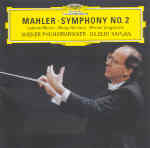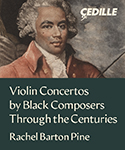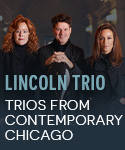First let’s get the edition thing out of the way. Here is yet another “new critical edition” that purports to supplant the old critical edition–and in the event does indeed fiddle with dynamics, the placement of a cymbal crash and suchlike, but also sounds more or less exactly as we expect it to anyway. Practically speaking the ordinary differences in performance from one conductor and orchestra to the next almost invariably outweigh the impact of using a new text such as this, especially when what we have is merely a revision of previous, reasonably accurate scholarship in the first place. Certainly it’s not a selling point.
Now let’s deal with the Kaplan thing. His story is well known: a rich guy with a Mahler fixation learns the Second Symphony so that he can fulfill his dream of conducting it, buys himself an orchestra or two for this purpose, and along the way becomes a noted authority on the subject. You can still hear people sneer at Kaplan for pretending to be a “real” conductor, largely out of jealousy I suppose. The bottom line is that conductors aren’t born; they are trained, just as Kaplan was, and he has as much right, experience, knowledge, and talent to play this music as anyone else. How and why he acquired his training is irrelevant; the only thing that matters is the results that he obtains.
And then there’s the Vienna thing. This orchestra, with its direct connection to Mahler, has recorded more outright failures in his music under more conductors than any other. Really, the VPO isn’t at all suited to Mahler, waltzes and what-not be damned, with its traditional inequalities between sections, unwillingness to make a rude noise where required, and its antediluvian percussion playing–evident here, for example, in the tam-tams that come and go despite Kaplan’s evident care in this department, and in the weak crash cymbals and inability of the same player to execute an even crescendo. Few conductors have been able to get these players to honor the composer’s intentions to the degree that other great Mahler orchestras in Prague, New York, and Amsterdam routinely do. Bernstein was one. So is Kaplan.
As to Kaplan’s interpretation, it’s mostly excellent. This first movement must be accounted one of the finest on disc–marvelously played by cellos and basses, the big moments pegged for all that they are worth, the second subject and quiet episodes gorgeously sustained and atmospheric. Kaplan times those tricky “breath pauses” at the movement’s climax just about perfectly (note the changed position of the third cymbal crash), and no one makes more musical sense out of the closing measures–the trumpet swells to a real fortissimo, exactly as Mahler wrote it, with the final downward scale positively cataclysmic. The same virtues apply to the Andante moderato: ideal tempo, shapely phrasing, and beautiful string tone add up to as fine a view as you’re likely to hear.
The scherzo represents a bit of a disappointment. Despite Kaplan’s generous observance of the “with parody” directive in those episodes for tipsy clarinet, the climaxes fail to take off as they should. This stiffness is evident in a few other places in this performance too, often when Kaplan makes a ritard on the upbeat to a new melody or musical paragraph, or, sticking with the scherzo, after the trio section (trumpets far too reticent) where he starts out a bit too slowly so as to make an accelerando back to the original tempo. It’s a matter of small details, but the result has a mannered quality that tends to get in the way of the music’s onward flow. I have no reservations, though, about the wonderfully solemn accompaniment Kaplan manages in the fourth movement, and many reservations about Nadja Michael’s wobbly and unattractive singing of it. She’s a liability.
The finale erupts superbly, though a bit more “attacca” would have been nice, here and also at the end of the scherzo. Even the ensuing slightly-out-of-sync offstage horns against woodwind triplets make a valid point about Mahler’s use of spatial effects. I do think, though, that the positioning of the offstage instruments here and elsewhere in this movement is simply too distant for optimal effect. On the other hand, the big climaxes are marvelously judged, the all-important horn playing is magnificent, and (cymbals aside) the great march rocks–Kaplan gets the strings to dig hard and the low brass to really snarl. What a pity, then, that its explosive disintegration and the following convulsive climax haven’t quite the impact that they should as a result of too-reticent percussion. Inconsistencies such as this–the well-captured quiet bass drum roll at the beginning of the offstage brass cadenza, set against too-loud solo flute and piccolo and too-distant brass–prove frustrating on repetition.
Kaplan coaxes lovely, hushed singing from the chorus, with impressive low basses. Soprano Latonia Moore floats her brief solos against the massed voices seraphically, while the orchestral interludes receive aptly luminous treatment. The closing pages, with the organ excellently balanced and lending just the right touch of celebratory weight, come off magnificently. Kaplan doesn’t stretch out the final chorus as Bernstein does, but he broadens the tempo enough to permit the music’s transcendental excess to make its full effect. No one realizes more effectively than Kaplan that troublesome moment just before the end when the “resurrection theme” gets banged out by timpani doubled by organ pedals, and you won’t hear the final crescendo leading to that “punched out” last chord better handled by anyone, anywhere.
Sonically this production is a mixed bag, as you may have guessed. It’s very brilliant and open on top and richly resonant in the bass, but also somewhat two-dimensional, with the onstage instruments crowded in on each other. The bass also tends to be murky at low dynamic levels, burying the timpani at such important points as the coda of the first movement, or at their duets in the scherzo’s second half. I’m very curious to hear this on SACD to see if that format doesn’t spread out the orchestra without diffusing the music’s impact and wrecking the coherence of the sound stage.
This is, then, a very fine (if a touch studied) Mahler Second, though not quite a first choice. Kaplan gets more authentic results from this recalcitrant orchestra than most other conductors. Certainly it’s comparable to Vienna’s only previous generally successful effort in this symphony, under Mehta for Decca (Maazel’s Sony recording is weird in too many places, and Abbado’s is a bore). In the final analysis, Mahlerians will want to hear it for Kaplan’s own thoroughly sympathetic and cogent view of the music, one that should put to rest once and for all any questions doubters may have about his credentials as a true Mahler conductor with something to say and the technical means to say it.
































